#5g antennas industry
Link
#orbis research#5g technology market#5g infrastructure market#5g antennas industry#5g nr (new radio) market
0 notes
Text

A New Day
#photographers on tumblr#nature#landscape#sunrise#clouds#orange#sky#skies#spring#primavera#industrial#vertical#daybreak#original photographers#original photography#5g#antenna
50 notes
·
View notes
Text
#GNSS antenna in india#GLONASS Antenna#Galileo antenna#Beidou Antennas#GNSS Antenna best price#gps antenna manufacturers#Top Gps Antenna Manufacturers in USA#GNSS Antenna Manufacturers#Gps Patch Antenna#UFI Manufacturer from New Delhi#Manufacturer of GPS Antenna#Gps Patch Antenna With UFI#Outdoor GPS Antenna#GPS External Antenna#GPS antenna - All industrial manufacturers#Antenna for GNSS#Antenna for wifi bluetooth#5G GNSS antenna#GSM Magnetic Antenna#GPS Magnetic Antenna at Best Price in India#External gps antenna with magnetic mount#GPS GNSS Magnetic Mount GPS Antenna#GPS GLONASS GNSS Antenna#GPS Magnetic Mount Antennas#Magnetic Mount GPS/#Mobile Magnetic Mount GPS Antenna#high performance antenna gnss#External GPS Antenna with Magnetic Mount Base#helical gps antenna#Helix Antennas
1 note
·
View note
Text
Advantages and disadvantages of 5G

5G technology or fifth generation technology offers many features for mobile networks. It is useful for government, students, businesses and professionals. It is a new mobile network designed to connect everyone and everything. It is the new standard in global wireless networks after 1G to 4G. It offers high multi-Gbps data speeds, low latency, large network capacity, and a flexible user experience. As this new technology is deployed, 5G technology should create many new applications.
5G technology features in brief. Speed up to 10 Gbits.
Great app
100 times more device connections
Fast response time
Waste of time
Another software option to upgrade. Great potential
With the proliferation of digital around the world, when live streaming and games, sports, news, movie reviews, social media, etc., the transfer of large amounts of data from one host to another and the Internet of Things (IoT) spurred the development of mobile phone standards. .
However, the 5G technology network has not yet reached its potential because the existing devices and infrastructure are not yet ready to support the 5G technology network. Those who have tested the 5G technology network using it with built-in 4G devices in this application are also called non-stationary 5G technology networks. The full potential of 5G technology will only be realized when independent networks, compatible devices and better communication tower technologies become available.
Advantages of 5G technology
Transfer data faster
The previous generation 4G LTE technology used bands below 3 GHz but in comparison, 5G technology uses bandwidth from 6 GHz in length to 24 GHz. However, it is important to note that 5G technology coverage also requires a base station and a broadcast tower compared to a 4G data network.
Improved network
5G networks are more flexible as they work with different customers, services and market segments. It divides its network in such a way that it will adapt to the needs of the users. It is based on Network Functions Virtualization (NFV) and Software Defined Networking (SDN). It is also called a "network fragment". This provides high data rates, low power consumption, and reliable low latency.
Moving Beamforming
Moving Beamforming refers to a radio signal processing technique that allows for the transmission or reception of a directional network, unlike a passive antenna that beams the signal randomly in all directions. 4G networks also use beamforming to some capacity, but in a growing sense.
Benefits for companies and businesses
It provides improved machine-to-machine communication for automation, real-time communication and guaranteed network availability, digitization of healthcare and agricultural industries.
Benefits for consumers
It provides fast download and download times when you are streaming users. Stable connection to mobile communications, low response time for online or cloud gaming, virtual reality, high quality live TV and 4K video telephony.
A more secure network
5G technology networks offer more security than previous generation networks. It supports protection against data loss, data corruption and theft. The exchange of sensitive and private customer data, such as hospital patient reports, customer data and student information at universities, is more secure in the 5G technology network.
Disadvantages of 5G
Limit coverage
The 5G technology network is a new technology, it requires a large network of ports and transmission towers worldwide, which requires a lot of time, testing, testing and setting up 5G technology towers.
Reduces durability
If the experts are to be believed, the non-standard 5G technology network undermines the performance of 4G network devices. Although a few manufacturers have started to produce 5G technology network devices, R & D believes that due to high data transmission in the largest network, the longevity or service life of mobile phones and other devices will be compromised.
Involvement in aviation
In January, Air India cancled several flights to the United States because they were rolling out 5G technology services in the country. This is a major setback of 5G technology in India as airlines have suffered losses due to ongoing 5G technology deployment projects. It can also be a hindrance in the future if not dealt with quickly. Internet Security Threats
Although the 5G technology network is said to help improve cybersecurity, it also has its limitations as it encourages cloud computing and exposes more data to risk. of hacking due to its lack of privacy and ease of access to network networks. on the other hand. hands
5G technologyin India
India officially launched its 5G technology network in October this year at an event held in New Delhi. Airtel and Jio have started rolling out 5G technology data plans in select state. However, Vodafone Idea is not planning to launch it in the near future.
In case of Airtel, they are currently placed in Tier I to Tier 8 countries. Jio has launched 5G technology services in limited areas. Many telecom operators are also of the opinion that pan-India 5G technology network coverage will take a few years. Jio recently announced after the 5G technology beta test that no SIM card is required to operate Jio's 5G technology network. However, Vodafone Idea has not yet announced its 5G technology network.
The health risks of 5G technology and the disadvantages of 5G technology for the environment
The International Commission on Non-ionizing Radiation Protection (ICNIRP) has stated that increasing radio frequencies above 6 GHz may have biological and health effects. The 5G technology network will increase the amount of electromagnetic radiation in the environment, causing a greater risk of cancer. With the lack of power of 5G technology network devices, there will also be an increase in the collection of electronic waste. The electric current from the cell tower exposed sparrows and other birds to increased egg production and nesting behavior. High rates of energy consumption have also contributed to global warming.
7 notes
·
View notes
Text
FTTA: High-Performance Solution for Integrated Optical Fiber and 5G Networks
There is a huge demand for high-speed data transfers in today’s mobile telecommunications networks. FTTA (Fiber-to-the-Antenna) is an essential element of 5G networks and ensures reliable, robust, and future-proof installation, improves user experience and reduces costs. This article helps you to understand FTTA.
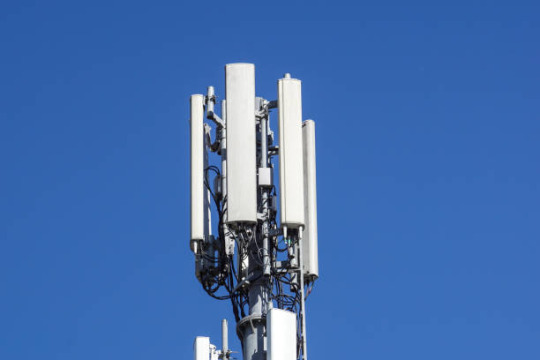
What is FTTA?
FTTA is a broadband network architecture to connect the building baseband unit (BBU) to the remote radio unit (RRU) at the top of the tower by using optical fibers to replace all or part of the coaxial network. FTTA can reduce the loss of signal power. And up to 20km's maximum transmission distance helps realize centralized placement of base stations (BS) in lower-cost telecommunication rooms and more flexible and modularized network planning.
FTTA Solution
FTTA solution reduces installation time and saves the cost of installation and maintenance. FTTA solution includes outdoor optic fibers, PDLC outdoor waterproof patch cords, terminal boxes, etc.

Benefits of FTTA
Perhaps the most benefit of FTTA stems from the physical content of the cable itself. The smaller diameter and lighter weight allow many fiber optic cables to occupy the same amount of space as a single coax cable. Because cellular towers are naturally subject to the elements, the physical size and properties of optical cabling are much less susceptible to damage from gusts of wind.
Other benefits of FTTA relate to the shift from analog to digital. Due to signal losses, the coax cable limited the distance between the antenna and the base station to as low as around 100m. Optical cabling can span up to 20 km with minimal losses.
FTTA provides improved energy consumption and signal integrity. Tower amplifiers are no longer required to combat the inherent noise floor of extended coax runs. The cooling of power amplifiers through air conditioning in a traditional base unit is replaced by ambient air cooling of the RRH, which significantly reduces the electrical power consumption of the system.
FTTA also provides flexible deployment, reduced complexity, saves installation time and space on the tower, lower investment, and high reliability.
Typical FTTA Scenario
Fiber optic networks aim to perform high-speed, error-free data transmission. Adequate testing during each phase of the network deployment guarantees that products meet specifications. It minimizes costly and time-consuming troubleshooting efforts, including locating dirty/damaged connectors, questionable splices, and other faulty components before they disrupt service.
One of the most crucial factors in ensuring proper transmission is controlling power loss in the network against the link loss-budget specifications from the network design recommendation, which establishes a total end-to-end loss budget with sufficient margin while reducing back reflection to a minimum.
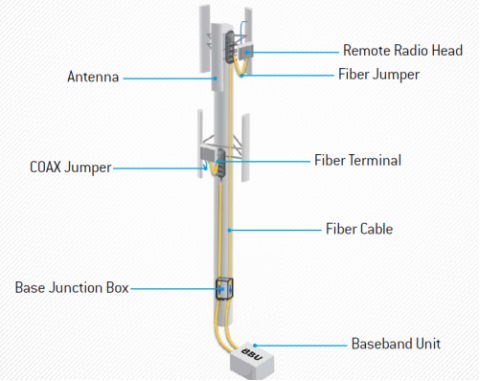
What is the Future of FTTA?
Consumer demand and technological advancement will continue to challenge the broadband infrastructure and necessitate more innovation. As incremental improvements such as active antennas integrated with the RRH to eliminate the need for all coax, small cell technology, and tower construction continues to evolve, it is safe to assume the future of FTTA may hold a few more surprises.
5G network provides speeds up to 100 times faster than 4G, which requires more small cell sites/DAS and improvements in conventional antenna tower bandwidth. Fiber optics will continue to provide the lifeblood to this ever-evolving network because only fiber can support the backhaul of these small cell sites produced by this intense proliferation of traffic.
Conclusion
FTTA is an innovative, flexible, and future-oriented way to install the network. It secures your network connectivity today and in the future.
Sun Telecom specializes in providing one-stop total fiber optic solutions for all fiber optic application industries worldwide. Contact us if you have any needs.
#suntelecom#fiberoptic#telecommunications#fttx#telecomengineering#cabling#osp#fiberopticcable#catv#telecomconsult
2 notes
·
View notes
Text
Accelerating Growth: Base Station Antenna Market Set to Reach $14.75 Billion by 2028 with a Remarkable CAGR of 14.9%
Overview and Scope
The base station antenna is used as a connection point for a wireless device to communicate. These antennas are base stations mounted on the towers to provide cellular connectivity to users. These antennas are used to cover single-frequency bands or multiple-frequency bands.
Sizing and Forecast
The base station antenna market size has grown rapidly in recent years. It will grow from $7.33 billion in 2023 to $8.46 billion in 2024 at a compound annual growth rate (CAGR) of 15.4%. The growth in the historic period can be attributed to expansion of mobile networks, increased mobile data usage, rise in smartphone penetration, network upgrades and modernization, introduction of carrier aggregation, globalization of mobile services, focus on rural connectivity, demand for high-speed connectivity..
The base station antenna market size is expected to see rapid growth in the next few years. It will grow to $14.75 billion in 2028 at a compound annual growth rate (CAGR) of 14.9%. The growth in the forecast period can be attributed to demand for indoor connectivity solutions, edge computing integration, focus on energy-efficient solutions, demand for smart antenna systems, urbanization and smart city initiatives, advanced antenna beamforming techniques, focus on network security.
To access more details regarding this report, visit the link:
https://www.thebusinessresearchcompany.com/report/base-station-antenna-global-market-report
Segmentation & Regional Insights
The base station antenna market covered in this report is segmented –
1) By Type: Omni Antenna, Dipole Antenna, Multibeam Antenna, Small Cell, Other Types
2) By Technology: 3G, 4G or LTE, 5G
3) By Application: Mobile Communication, Intelligent Transport, Industrial, Smart City, Military and Defense, Other Applications
Asia-Pacific was the largest region in the base station antenna market in 2023. North America was the second largest region in the base station antenna market analysis. The regions covered in the base station antenna market report are Asia-Pacific, Western Europe, Eastern Europe, North America, South America, Middle East, Africa.
Intrigued to explore the contents? Secure your hands-on sample copy of the report:
https://www.thebusinessresearchcompany.com/sample.aspx?id=8576&type=smp
Major Driver Impacting Market Growth
The increasing usage of mobile devices will boost the demand for base station antenna. The demand and usage for mobile devices are increasing to access the internet and stay connected virtually. Base station antenna provides cellular connectivity to users for their mobile devices.
Key Industry Players
Major companies operating in the base station antenna market report are CommScope Holding Company Inc., Amphenol Corporation, Ace Technologies Corporation, Comba Telecom, Huawei Technologies Co. Ltd., Rosenberger Hochfrequenztechnik GmbH & Co. KG,
The base station antenna market report table of contents includes:
1. Executive Summary
2. Market Characteristics
3. Market Trends And Strategies
4. Impact Of COVID-19
5. Market Size And Growth
6. Segmentation
7. Regional And Country Analysis
.
.
.
27. Competitive Landscape And Company Profiles
28. Key Mergers And Acquisitions
29. Future Outlook and Potential Analysis
Contact Us:
The Business Research Company
Europe: +44 207 1930 708
Asia: +91 88972 63534
Americas: +1 315 623 0293
Email: [email protected]
Follow Us On:
LinkedIn: https://in.linkedin.com/company/the-business-research-company
Twitter: https://twitter.com/tbrc_info
Facebook: https://www.facebook.com/TheBusinessResearchCompany
YouTube: https://www.youtube.com/channel/UC24_fI0rV8cR5DxlCpgmyFQ
Blog: https://blog.tbrc.info/
Healthcare Blog: https://healthcareresearchreports.com/
Global Market Model: https://www.thebusinessresearchcompany.com/global-market-model
0 notes
Text
Over-the-air (OTA) Market - Global Opportunity Analysis and Industry Forecast (2024-2031)
Meticulous Research®—a leading global market research company, published a research report titled, ‘Over-the-air (OTA) Market by Offering (Solutions (FOTA, SOTA), Services), Application (OTA Testing, Wireless Communication, Software & Firmware Update, Regulatory Compliance), Industry (Automotive, BFSI, Retail), and Geography - Global Forecast to 2031.’
According to this latest publication from Meticulous Research®, the global over-the-air (OTA) market is projected to reach $20.7 billion by 2031, at a CAGR of 14.7% from 2024 to 2031. The growth of this market is driven by factors such as the proliferation of IoT devices, the growing need to reduce the costs associated with manual updates and device recalls, and the increasing demand for connected features in vehicles. Additionally, the integration of edge computing & blockchain technology for OTA updates and the emergence of vehicle-to-everything (V2X) connectivity are expected to create market growth opportunities. However, limited network bandwidth may restrain the growth of this market. Furthermore, concerns regarding data security are major challenges for the players operating in this market.
Additionally, the deployment of 5G networks for faster OTA updates is a key trend in the over-the-air (OTA) market.
The global over-the-air (OTA) market is segmented by offering, application, and end-use industry. The study also evaluates end-use industry competitors and analyzes the market at the region/country level.
Based on offering, the global over-the-air (OTA) market is broadly segmented into solutions and services. The solutions segment is further segmented into firmware over-the-air (FOTA) and software over-the-air (SOTA). In 2024, the solutions segment is expected to account for the larger share of the global over-the-air (OTA) market. The large market share of this segment is attributed to the increasing need to manage software upgrades, cybersecurity patches, and mission-critical updates and the growing demand for OTA solutions to deliver software updates to devices, including operating system upgrades, firmware updates, and performance improvements.
However, the services segment is projected to register a higher CAGR during the forecast period due to the increasing need for OTA services for updating applications and software components installed on devices, the rising need to manage network infrastructure, optimize performance, remotely manage devices, and deliver new services effectively, and growing use of 5G OTA services to evaluate the performance, reliability, and functionality of 5G wireless devices and systems in real-world conditions.
Based on application, the global over-the-air (OTA) market is broadly segmented into OTA testing, software & firmware updates, wireless communication, and regulatory compliance. In 2024, the software & firmware update segment is expected to account for the largest share of the global over-the-air (OTA) market. The large market share of this segment is attributed to the proliferation of connected devices, including smartphones, IoT devices, and automotive systems, the increasing need to deploy security patches, encryption updates, and privacy enhancements to protect against cyber threats and safeguard sensitive data, and the growing need to keep up with evolving software and hardware capabilities to ensure products remain competitive and up-to-date.
However, the OTA testing segment is projected to register the highest CAGR during the forecast period due to the growing need for OTA testing to assess the antenna performance, ensure wireless devices comply with end-use industry standards and regulatory requirements, evaluate the MIMO performance in wireless devices, and measure the throughput and data rates of 5G devices.
Based on end-use industry, the global over-the-air (OTA) market is broadly segmented into IT & telecommunications, automotive, consumer electronics, manufacturing, BFSI, transportation & logistics, energy & power, aerospace & defense, retail, healthcare, and other end-use industries. In 2024, the IT & telecommunications segment is expected to account for the largest share of the global over-the-air (OTA) market. The large market share of this segment is attributed to factors such as the growing need to extend the lifecycle of varying devices, including servers, routers, switches, and network devices, by providing software upgrades and patches, the increasing need for remote device management, configuration, and monitoring, and the growing demand for OTA solutions to ensure the reliability, performance, and security of network infrastructure.
However, the automotive segment is projected to register the highest CAGR during the forecast period due to the increasing need to reduce the need for physical recalls due to software-related issues, the growing adoption of autonomous electric vehicles, the proliferation of connected car services, including telematics and vehicle-to-everything communication (V2X), and the growing demand for OTA updates to maintain and upgrade vehicle systems and ensure compliance with evolving regulations and standards.
Based on geography, the global over-the-air (OTA) market is segmented into North America, Europe, Asia-Pacific, Latin America, and the Middle East & Africa. In 2024, North America is expected to account for the largest share of the global over-the-air (OTA) market, followed by Europe and Asia-Pacific. North America’s significant market share can be attributed to the increasing advancements in connected car technologies, autonomous vehicles, and electric vehicles, the increasing use of OTA updates to ensure compliance with regulatory requirements and standards for data privacy, security, and safety, the growing adoption of OTA technology in aerospace & defense systems, the increasing adoption of software-defined infrastructure and systems, and the growing adoption of IoT devices including smart home devices, industrial sensors, healthcare monitors, and agricultural sensors.
However, the market in Asia-Pacific is projected to register the highest CAGR during the forecast period. The growing number of smartphone users and connected devices, the emergence of 5G networks, the increasing need to reduce manual intervention, physical recalls, and on-site maintenance, the increasing adoption of digital technologies, including cloud computing and online services, and the growing demand for consumer electronics, including smart TVs, streaming devices, gaming consoles, and home appliances in the region are expected to support the growth of this market.
Key Players:
The key players operating in the over-the-air (OTA) market are Thales (France), T-Systems International GmbH (Germany), HARMAN International (U.S.), NXP Semiconductors N.V. (Netherlands), BlackBerry Limited (Canada), Intertek Group plc (U.K.), TÜV SÜD (Germany), Airbiquity Inc. (U.S.), Nokia (Finland), Cyient Limited (India), IDEMIA (France), Microwave Vision, SA. (MVG) (France), Excelfore Corporation (U.S.), Sibros Technologies Inc. (U.S.), Memfault Inc. (U.S.), UL LLC (U.S.), Keysight Technologies, Inc. (U.S.), EMITE Ing.S.L. (Spain), Microchip Technology Inc. (U.S.), shanghai Facom Technology CO., LTD. (HBTE) (China), Advantal Technologies Private Limited (India), and Carota Corp (Taiwan).
Download Sample Report Here @ https://www.meticulousresearch.com/download-sample-report/cp_id=5789
Key questions answered in the report-
What are the high-growth market segments in terms of offering, application, end-use industry, and geography?
What was the historical market of the over-the-air (OTA) market?
What are the market forecasts and estimates for the period 2024–2031?
What are the major drivers, restraints, opportunities, and challenges in the over-the-air (OTA) market?
Who are the major players, and what shares do they hold in the over-the-air (OTA) market?
What is the competitive landscape like in the over-the-air (OTA) market?
What are the recent developments in the over-the-air (OTA) market?
What are the different strategies adopted by the major players in the over-the-air (OTA) market?
What are the key geographic trends, and which are the high-growth countries?
Who are the local emerging players in the global over-the-air (OTA) market, and how do they compete with the other players?
Contact Us:
Meticulous Research®
Email- [email protected]
Contact Sales- +1-646-781-8004
Connect with us on LinkedIn- https://www.linkedin.com/company/meticulous-research
#OvertheairMarket#OTAMarket#OverAWirelessNetwork#Firmwareovertheair(FOTA)#Softwareovertheair(SOTA)#5GOTATesting#OTATesting#AutomotiveOverTheAir(OTA)
0 notes
Text
Unlocking Career Opportunities in Telecommunications Staffing
In the ever-expanding world of telecommunications, skilled professionals are in high demand to keep networks running smoothly and efficiently. From a telecom technician to a tower technician and a cabling technician, the industry offers a wide array of rewarding career opportunities for those with the right skills and expertise. If you're seeking telecommunications jobs near me, exploring roles within the industry could be the next step in advancing your career.
The Role of Telecommunications Staffing
Telecommunications staffing agencies play a crucial role in connecting qualified professionals with employers in need of their expertise. These agencies specialize in sourcing, screening, and placing candidates in a variety of roles within the telecommunications sector. Whether you're a seasoned cabling technician or a novice looking to break into the industry, telecommunications staffing agencies can help you find the right opportunity to match your skills and career goals.
Opportunities for Cabling Technicians
A cabling technician plays a vital role in the telecommunications industry, responsible for installing, maintaining, and repairing network cables and infrastructure. From data centers to office buildings and telecommunications towers, cabling technicians are in demand across various sectors. With the increasing emphasis on connectivity and data transmission, the need for skilled cabling technicians continues to grow, making it an excellent career choice for those with technical aptitude and attention to detail.
Exploring Telecom Technician Roles
Telecom technicians are the backbone of telecommunications networks, responsible for installing, maintaining, and troubleshooting equipment such as routers, switches, and telecommunication lines. These professionals play a critical role in ensuring the seamless operation of telecommunications systems, making them indispensable to companies in the industry. Whether you specialize in voice, data, or wireless communications, there are ample opportunities for telecom technicians to thrive in today's digital landscape.
Ascending the Heights as a Tower Technician
A tower technician is responsible for the installation, maintenance, and repair of telecommunications towers and antennas. Working at heights and in various weather conditions, tower technicians play a crucial role in expanding and maintaining telecommunications networks. With the rapid growth of wireless communication technologies, including 5G networks, the demand for skilled tower technicians is on the rise, offering lucrative career opportunities for those willing to take on the challenge.
Finding Telecommunications Jobs Near You
If you're on the lookout for telecommunications jobs near me, partnering with a reputable staffing agency specializing in the industry can be instrumental in your job search. Telecommunications staffing agencies have access to a vast network of employers and job opportunities, allowing them to match candidates with roles that align with their skills and career objectives. Whether you're seeking full-time employment, contract work, or temporary assignments, telecommunications staffing agencies can help you find the right opportunity.
Conclusion
The telecommunications industry offers a wealth of opportunities for skilled professionals looking to advance their careers. Whether you're a cabling technician, telecom technician, or tower technician, there are plenty of roles available to suit your expertise and interests. By partnering with a reputable telecommunications staffing agency, you can unlock access to a wide range of job opportunities and take the next step toward achieving your career goals in the dynamic and fast-paced world of telecommunications.
0 notes
Link
0 notes
Text
Unlocking Connectivity: The Importance of RF Engineering Services
In our rapidly evolving digital landscape, where connectivity is the lifeline of modern society, the significance of RF (Radio Frequency) engineering services cannot be overstated. From ensuring seamless wireless communication to optimizing network performance, RF engineering plays a pivotal role in keeping the world interconnected. Let's delve into the realm of RF engineering services and explore their indispensable contributions to our interconnected world.

RF engineering services encompass a wide array of specialized skills and expertise aimed at designing, deploying, and maintaining wireless communication systems. These services are integral to various industries, including telecommunications, aerospace, automotive, healthcare, and beyond. Whether it's designing cellular networks, optimizing radio coverage, or troubleshooting interference issues, RF engineers are at the forefront of innovation, continually pushing the boundaries of connectivity.
One of the primary domains of RF engineering services is the design and optimization of wireless networks. RF engineers meticulously plan and deploy network infrastructures to ensure optimal coverage, capacity, and reliability. Through advanced simulation tools and predictive modeling, they analyze factors such as signal propagation, interference, and spectrum utilization to design networks that meet the demanding requirements of modern applications.
Moreover, RF engineering services play a crucial role in the development and deployment of cutting-edge technologies such as 5G and IoT (Internet of Things). As the demand for high-speed, low-latency connectivity grows exponentially, RF engineers are tasked with overcoming complex technical challenges to deliver next-generation wireless solutions. From designing innovative antenna systems to optimizing spectrum utilization, these professionals are instrumental in shaping the future of wireless communication.
Furthermore, RF engineering services are indispensable in ensuring compliance with regulatory standards and mitigating interference issues. RF engineers conduct comprehensive site surveys and spectrum analysis to identify potential sources of interference and implement mitigation strategies to minimize their impact. By adhering to stringent regulatory requirements and industry best practices, they ensure that wireless systems operate reliably and safely within prescribed limits.
In addition to network design and optimization, RF engineering services encompass a wide range of specialized solutions tailored to specific industry needs. For instance, in the aerospace and defense sector, RF engineers develop sophisticated radar and communication systems for surveillance, navigation, and tactical communication purposes. Similarly, in the healthcare industry, RF engineers design medical telemetry systems and wireless implants that enable remote patient monitoring and healthcare delivery.
Furthermore, RF Safety Services are instrumental in the development of wireless technologies for automotive applications, such as vehicle-to-vehicle communication, collision avoidance systems, and autonomous driving features. By leveraging their expertise in RF design, propagation, and signal processing, engineers enable safer, more efficient transportation systems that revolutionize the way we travel.
0 notes
Text
Base Station BBU Unit, Global Market Size Forecast, Top Six Players Rank and Market Share
Base Station BBU Unit Market Summary
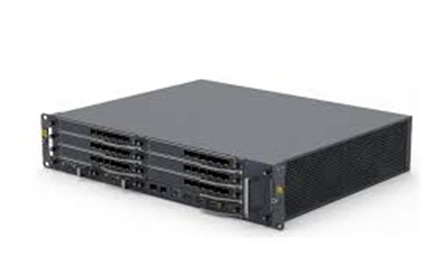
A baseband unit (BBU) is a telecommunications network device used to process baseband signals. Baseband is the term used to describe the original frequency transmitted before modulation. A traditional radio access network (RAN) consists of a BBU connected to one or more remote radio units (RRUs) located near the antennas. The baseband unit is responsible for communicating with the core network through the physical interface, while the remote radio unit performs transmit and receive radio functions.
Figure. Global Base Station BBU Unit Market Size (US$ Million), 2018-2029

Above data is based on report from QYResearch: Global Base Station BBU Unit Market Report 2023-2029 (published in 2023). If you need the latest data, plaese contact QYResearch.
According to the new market research report “Global Base Station BBU Unit Market Report 2023-2029”, published by QYResearch, the global Base Station BBU Unit market size is projected to reach USD 32.18 billion by 2029, at a CAGR of 18.0% during the forecast period.
Figure. Global Base Station BBU Unit Top Six Players Ranking and Market Share (Ranking is based on the revenue of 2022, continually updated)
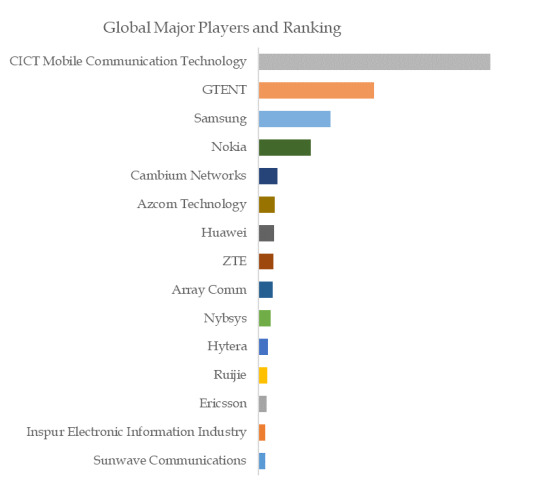
Above data is based on report from QYResearch: Global Base Station BBU Unit Market Report 2023-2029 (published in 2023). If you need the latest data, plaese contact QYResearch.
According to QYResearch Top Players Research Center, the global key manufacturers of Base Station BBU Unit include CICT Mobile Communication Technology, GTENT, Samsung, Nokia, Cambium Networks, Azcom Technology, Huawei, ZTE, Array Comm, Nybsys, etc.
In 2022, the global top six players had a share approximately 67.3% in terms of revenue. Above figure shows the key players ranked by revenue in Base Station BBU Unit.
Market Drivers: The growth of the BBU market is driven by several key factors. The primary driver is the continued deployment and expansion of 5G networks around the world, where digital BBUs play a key role in delivering the higher data rates and low latency required for next-generation wireless communications. Additionally, as operators invest in digital BBUs to improve network efficiency and meet growing demand for mobile data services.
Because the 5G digital baseband unit is a key component of the new wireless communication system. It is used to provide stable, high-speed, uninterrupted data connections even in complex network environments. The current telecom industry is witnessing huge demand for digital baseband units across the world as they reduce operating costs while improving performance. Such digital components are competitively priced and come with enhanced features such as low power consumption and efficient signal processing capabilities to deliver quality services on time. As the communications industry embraces the 5G, 5.5G and beyond era, the digital baseband unit market is expected to continue to grow, and the necessity to upgrade network infrastructure to meet the changing requirements of high-performance and data-intensive wireless communications also provides this market with Support provided.
About The Authors
Analyst: Ran xinrong
Email: [email protected]
Website: www.qyresearch.com Hot Line:4006068865
QYResearch focus on Market Survey and Research
US: +1-888-365-4458(US) +1-202-499-1434(Int'L)
EU: +44-808-111-0143(UK) +44-203-734-8135(EU)
Asia: +86-10-8294-5717(CN) +852-30628839(HK)
About QYResearch
QYResearch founded in California, USA in 2007.It is a leading global market research and consulting company. With over 16 years’ experience and professional research team in various cities over the world QY Research focuses on management consulting, database and seminar services, IPO consulting, industry chain research and customized research to help our clients in providing non-linear revenue model and make them successful. We are globally recognized for our expansive portfolio of services, good corporate citizenship, and our strong commitment to sustainability. Up to now, we have cooperated with more than 60,000 clients across five continents. Let’s work closely with you and build a bold and better future.
QYResearch is a world-renowned large-scale consulting company. The industry covers various high-tech industry chain market segments, spanning the semiconductor industry chain (semiconductor equipment and parts, semiconductor materials, ICs, Foundry, packaging and testing, discrete devices, sensors, optoelectronic devices), photovoltaic industry chain (equipment, cells, modules, auxiliary material brackets, inverters, power station terminals), new energy automobile industry chain (batteries and materials, auto parts, batteries, motors, electronic control, automotive semiconductors, etc.), communication industry chain (communication system equipment, terminal equipment, electronic components, RF front-end, optical modules, 4G/5G/6G, broadband, IoT, digital economy, AI), advanced materials industry Chain (metal materials, polymer materials, ceramic materials, nano materials, etc.), machinery manufacturing industry chain (CNC machine tools, construction machinery, electrical machinery, 3C automation, industrial robots, lasers, industrial control, drones), food, beverages and pharmaceuticals, medical equipment, agriculture, etc.
0 notes
Text
0 notes
Text

What is Rogers PCB?
Rogers PCB is a type of printed circuit board (PCB) material made from a combination of epoxy and ceramic. It is well known for its high dielectric constant, low loss tangent, and high thermal conductivity, making it an ideal material for high-frequency applications. It is used in a wide range of electronics, such as:
5G Station
Cellular Base Station Antennas and Power Amplifiers
Automotive Radar and Sensors
Microwave point to point (P2P) links
LNB’s for Direct Broadcast Satellites
Microwave equipment of all kinds.
RF Identification (RFID) Tags
Rogers PCB is produced using the raw materials of the Rogers Company. Rogers company manufactures the laminate materials that are often used for manufacturing circuit boards. The Rogers PCB is a type of high-frequency PCB board, quite different from the traditional PCB board materials, epoxy resin. It uses the ceramic base as the material of high frequency. The major advantage of Rogers PCB is the temperature stability and superior dielectric constant.
Rogers PCB has a major application in high-speed electronic designs, radio frequency applications, and commercial microwaves. The low water absorption capacity of this Rogers PCB is ideal for the application of high humidity. Other Rogers PCB applications include RF identification tags, power amplifiers, automotive radar, sensors, etc.
Rogers PCB fabrication needs in-depth research on high-frequency PCB. HITECHPCB is a Rogers PCB manufacturer and has a deep understanding of the performance of Rogers PCB material. For example, Rogers PCB laminates and Rogers PCB dielectric constant in Rogers PCB material properties Rogers PCB is a high-frequency PCB material model produced by Rogers company, different from the conventional FR-4 PCB material. There is no epoxy resin in the Rogers PCB material, and Rogers ceramic PCB is used as the High-frequency PCB material. Absorption of Rogers PCB, it can be used as an ideal choice for application ns in high humidity environments, providing customers in the high-frequency PCB industry with the highest quality.
Difference Between Rogers Materials and FR-4 Materials
By combining Rogers PCB layers with FR-4 layers, we can achieve reduced cost and maximum performance compared to if we used only Rogers layers. Thus, this process should use Rogers PCB cores instead of prepregs for this process.
FR-4 stack up with 6 layers is shown below. Because prepreg is less expensive than cores, it is placed on the outside to minimize cost. A foil build is often referred to as this.
Rogers layers are required on the outside layers, but the core is usually found on the layers that need them. Below is an example with 6 layers but with 3 cores instead of 2. This configuration is sometimes called a "core build" or "cap construction" board. Rogers PCB is a high-frequency circuit board that has ceramic laminates and reinforced hydrocarbon. A Rogers PCB may be made from cores and prepregs, but most often, the top two copper layers are carried on the core, while the rest of the board is made from standard FR-4 to reduce the cost. The PCB materials absorb the signal, due to which it has less signal loss compared to that of FR-4. At higher frequencies, the signal loss is greater in FR-4 materials. This is also the signal length and design dependent.
High-Frequency
PCB with FR-4 materials is preferred due to their low cost, reliability, and well-understood electrical and mechanical properties. They are used in various applications ranging from microwave designs to audio circuits. Unfortunately, FR-4 printed circuit boards are not suitable for high-frequency applications. Rogers created the most well-known high-frequency-special laminates. Its materials have a constant dielectric reduction of close to 20% when compared to FR-4 printed circuit boards.
The best way to determine whether your project will benefit from high-frequency laminates is to assess electrical and mechanical requirements. If you find both variations are too broad, Rogers PCB material is a better option.
Dissipation
The material used is most important when producing printed circuit boards, though it may require a high cost. However, it is not the only issue that knows the content value when it comes to the loss factor or Df. FR-4 printed circuit boards will be affected or reduced. The losses are greater when compared to printed circuit boards made from Rogers materials.
In other words, when compared to Rogers PCB, FR-4 materials have a higher dissipation factor, especially at high frequencies. Typical values for FR-4 printed circuit boards are around 0.020 and close to 0.004 for Rogers boards. Dissipation of FR-4 materials increases with frequency. High-frequency laminates primarily have a frequency-dependent stable dissipation characteristic.
The signal loss is minimized with the lower dissipation factor in FR-4. Also, the automated assembly process and the processing of FR-4 materials make them easier in the assembly and manufacturing process.
Impedance Stability
Impedance is the measure of the current opposition when applying voltage. In many design applications, the stable impedance is essential and is an area where the materials like Rogers and FR-4 are applied.
FR-4, despite its low cost, is prone to high variations in the dielectric constant with the change in temperature across the length and width of the substrate. In terms of impedance stability, Rogers' material has a wider range of dielectric constants than FR-4 content.
High-frequency laminates are preferable for circuits that require little variation over wide temperature ranges. In this case, you may need to use printed circuit boards made of Rogers materials rather than FR-4 materials, especially if most of your operations involve working in high-temperature environments.
Dielectric Constant
The dielectric constant of any material measures a substance's ability to store some electrical energy across an electrical field. When it comes to dielectric constant, FR-4 has a dielectric constant of about 4.5, which is much lower than Roger's material, which has a dielectric constant of about 6.15 to 11.
The dielectric constant of FR-4 is comparatively higher than that of plastic materials. Using FR-4 materials can save at least 25% of PCB made from such materials. Other factors that make FR-4 articles available include their lightweight, moisture resistance, and high dielectric strength. Even though the Rogers PCB has a higher dielectric than FR-4, you can go with FR-4. FR-4 and Rogers 4350b and 4350 are similar manufacturing processes, although FR-4 stores electrical energy effectively.
Thus, PCB with higher dialect trends breaks easier when subjected to intense electric fields.
0 notes
Text
Unlocking Enhanced Connectivity: The Evolution Of Dual-Band Antennas
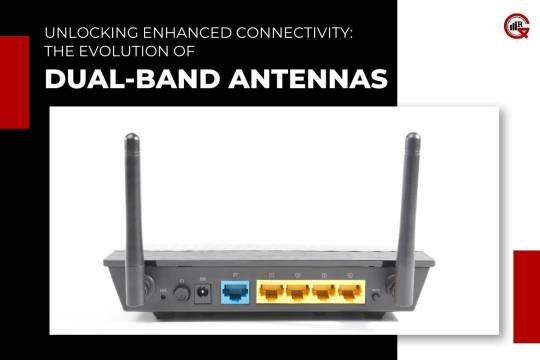
In an era where seamless connectivity is paramount, the advancement of antenna technology plays a pivotal role in facilitating reliable communication across various applications. Among the innovations that have revolutionized wireless communication is the dual-band antenna. In this article, we explore the intricacies of dual-band antennas, their applications, and the impact they have on enhancing connectivity in diverse environments.
Understanding Dual-Band Antennas:
Dual-band antennas are a type of antenna designed to operate across two distinct frequency bands simultaneously. Unlike traditional antennas that are optimized for a single frequency band, dual-band antennas offer the versatility of supporting multiple frequency bands within a single compact design. This capability enables them to cater to a wide range of wireless communication systems and devices, providing enhanced performance and flexibility.
Design and Operation:
https://gqresearch.com/wp-content/uploads/2024/04/2.2.-Design-and-Operation.jpg
The design of dual-band antennas is engineered to accommodate two frequency bands while minimizing interference between them. This typically involves the incorporation of multiple radiating elements or the use of specialized impedance-matching techniques. By carefully tuning the antenna’s parameters, such as length, width, and spacing, engineers can optimize its performance across both frequency bands.
Dual-band antennas can operate in various configurations, including dipole, patch, loop, and helical designs, depending on the specific application requirements. Each configuration offers unique advantages in terms of radiation pattern, gain, and polarization, allowing for customization based on the intended use case.
Applications of Dual Band Antennas:
Dual-band antennas find applications across a wide range of wireless communication systems and devices, spanning different industries and sectors. Some common applications include:
Wireless Networking: Dual-band antennas are widely used in wireless networking devices, such as routers, access points, and Wi-Fi-enabled devices. By supporting both the 2.4 GHz and 5 GHz frequency bands, band antennas enable faster data transmission, reduced interference, and improved network performance.
Cellular Communication: In the realm of cellular communication, dual-band antennas are employed in smartphones, tablets, and other mobile devices to ensure seamless connectivity across multiple frequency bands. They allow users to access 4G LTE, 5G, and other cellular networks with enhanced coverage and reliability.
Satellite Communication: Dual antennas play a crucial role in satellite communication systems, where they are used for transmitting and receiving signals from satellites in both the L-band and Ku-band frequency ranges. These antennas enable high-speed data transfer and reliable communication for applications such as broadcasting, telecommunication, and remote sensing.
RFID and NFC Systems: These antennas are utilized in radio frequency identification (RFID) and near-field communication (NFC) systems for tracking and authentication purposes. They enable efficient data exchange between RFID tags and readers, as well as NFC-enabled devices, in diverse environments such as retail, logistics, and access control systems.
Automotive Telematics: In the automotive industry, these antennas are integrated into vehicles for telematics applications, including GPS navigation, vehicle tracking, and in-car entertainment systems. These antennas support both the GPS/GNSS (Global Navigation Satellite System) and cellular bands, enabling real-time location tracking and communication with remote servers.
Advantages of Dual Band Antennas:
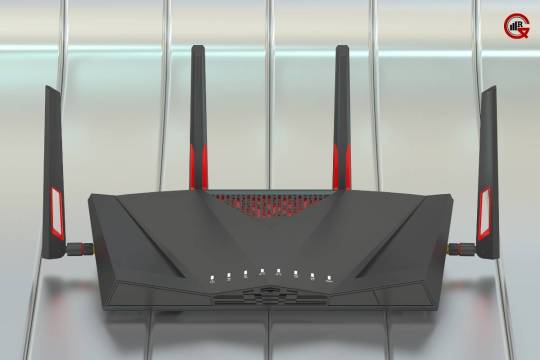
These antennas offer several advantages over single-band antennas, making them a preferred choice for modern wireless communication systems:
Versatility: Dual antennas provide support for multiple frequency bands, allowing them to be used in a wide range of applications without the need for separate antennas. This versatility simplifies system design and integration, reducing costs and complexity.
Enhanced Performance: By operating across two frequency bands, dual antennas offer improved performance in terms of coverage, data throughput, and signal quality. They can mitigate interference and congestion issues commonly encountered in single-band systems, resulting in more reliable and efficient communication.
Space Efficiency: Dual antennas enable the consolidation of multiple antennas into a single compact unit, saving valuable space and reducing clutter in devices and infrastructure. This space efficiency is particularly beneficial in applications where size constraints are a concern, such as mobile devices and embedded systems.
Future-Proofing: With support for multiple frequency bands, band antennas are well-equipped to adapt to evolving communication standards and technologies. They offer future-proofing capabilities, ensuring compatibility with upcoming wireless networks and protocols without the need for hardware upgrades.
Cost-Effectiveness: Despite their advanced capabilities, dual antennas are cost-effective solutions compared to deploying separate antennas for each frequency band. Their integrated design and simplified installation process result in lower deployment and maintenance costs over the long term.
Improved Signal Quality: Band antennas are designed to optimize signal reception and transmission across multiple frequency bands, resulting in improved signal quality and reliability. This ensures that users experience consistent connectivity and minimal signal degradation, even in challenging environments with obstacles or interference.
Seamless Roaming: Dual antennas facilitate seamless roaming between different wireless networks or access points operating on different frequency bands. This capability is particularly beneficial in scenarios where devices need to transition between Wi-Fi networks or cellular towers without experiencing interruptions in connectivity.
Increased Network Capacity: By supporting multiple frequency bands, band antennas help increase the overall network capacity and bandwidth available for data transmission. This allows for more devices to connect simultaneously without sacrificing performance, leading to enhanced user experiences in crowded or high-density environments.
Enhanced Security: Band antennas can be configured to implement advanced security features, such as encryption and authentication protocols, to protect sensitive data transmitted over wireless networks. This ensures that communication remains secure and safeguarded against unauthorized access or eavesdropping attempts.
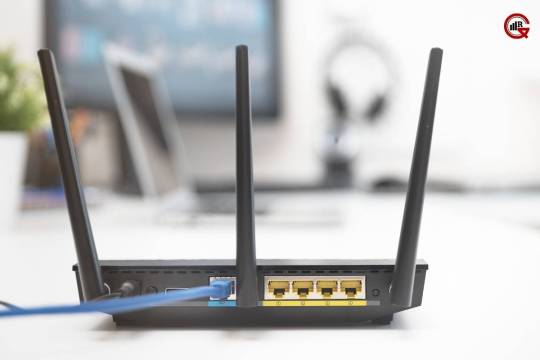
Optimization for Specific Applications: Dual antennas can be customized and optimized for specific applications or use cases to maximize performance and efficiency. For example, in indoor Wi-Fi deployments, dual antennas can be configured to prioritize coverage in specific areas or to minimize interference from neighboring networks.
Integration with MIMO Technology: Many antennas incorporate multiple-input multiple-output (MIMO) technology, which utilizes multiple antenna elements to improve data throughput and reliability. By harnessing the spatial diversity of multiple antennas, MIMO-enabled antennas can achieve higher data rates and better signal quality, especially in high-speed wireless communication systems.
Compatibility with Multi-Protocol Devices: Dual antennas are compatible with multi-protocol devices that support different wireless standards and protocols, such as IEEE 802.11 (Wi-Fi), Bluetooth, Zigbee, and cellular technologies. This compatibility ensures seamless connectivity across diverse devices and networks, enabling interoperability and flexibility in communication ecosystems.
Environmental Resilience: Dual antennas are engineered to withstand harsh environmental conditions, including extreme temperatures, moisture, and mechanical stress. This resilience makes them suitable for outdoor deployments in industrial, military, and transportation applications, where reliable communication is critical for mission-critical operations.
Scalability and Future Expansion: Dual antennas offer scalability and flexibility to accommodate future expansion and growth in wireless networks. As technology evolves and new frequency bands are allocated for communication purposes, dual antennas can adapt and support additional bands through firmware updates or hardware modifications, ensuring long-term compatibility and investment protection.
Conclusion:
In conclusion, band antennas represent a significant advancement in wireless communication technology, offering enhanced connectivity, versatility, and performance across a wide range of applications. Whether used in wireless networking, cellular communication, satellite systems, RFID, automotive telematics, or other domains, band antennas play a crucial role in enabling seamless and reliable connectivity in today’s interconnected world. As the demand for faster, more efficient wireless communication continues to grow, dual-band antennas are poised to remain at the forefront of innovation, driving the evolution of connectivity solutions for years to come.
0 notes
Text
AmpliTech Group’s Division AGTGSS, Riding The Crest Of Its Recent O-RAN CAT B 64T64R MIMO Radio Release, Teams Up With the Open6G OTIC at the Institute for the Wireless Internet of Things (WIoT) at Northeastern University To Perform O-RAN 5G Interoperability Testing

HAUPPAUGE, NY, April 02, 2024 - AmpliTech Group, Inc (Nasdaq: AMPG), a designer, developer, and manufacturer of state-of-the-art signal-processing components for satellite, 5G, other communications networks, design of complete 5G/6G systems, global distributor of packages and lids for integrated circuit assembly, today announced teaming up with the Open6G Open Testing and Integration Center (OTIC) at the Institute for the Wireless Internet of Things (WIoT) at Northeastern University (NU) to perform 5G interoperability testing (IOT) and conformance testing of its newly released, leading edge O-RAN CAT B 64T64R MIMO radio unit (O-RU). This activity will take place at the Open6G OTIC in Boston and Burlington, Massachusetts.
The NU Open6G OTIC will provide a comprehensive platform for end-to-end and automated integration and testing of the AmpliTech O-RU in a multi-vendor environment. Several CU/DU (Central Unit/Distribution Unit) vendors have expressed interest in conducting interoperability testing with AGTGSS’s 64T64R O-RU. Thanks to the Open6G OTIC support, new market entrants can gain an advantage and explore new solutions for O-RAN systems.
The NU Open6G OTIC and AGTGSS will conduct IOT and conformance testing to ensure that the radios meet the necessary capacity and throughput requirements sought by MNOs (Mobile Network Operators). These major MNOs compel traditional vendors to open their fronthaul for third parties to achieve successful interoperability. From the perspective of MNOs, these stable traditional vendors are deemed capable of accommodating AGTGSS as a third-party radio vendor without compromising key performance indicators (KPIs). Notably, The Open6G Open Testing and Integration Center (OTIC) at the Institute for the Wireless Internet of Things (WIoT) at Northeastern University, also partners with AT&T and Verizon as a neutral testing facility in the Acceleration of Compatibility and Commercialization for Open RAN Deployments Consortium (ACCoRD) framework.
Although AGTGSS has a verbal agreement with a major 5G international CU/DU player to jointly participate in this endeavor, (to be formally announced at a later date), this interoperability testing is not exclusive to a single CU/DU vendor; any CU/DU vendor can participate in the testing. AmpliTech Group and the NU Open6G OTIC can support the creation and testing of multiple options for MNOs, aligning with the multi-vendor and interoperability core principle of Open RAN. The end-to-end interoperability testing, conducted by the Open6G OTIC, will provide a platform for any vendor to bring and test their infrastructure. AGTGSS teaming up with Northeastern University extends beyond testing, aiming to incorporate orchestration and automation-based RIC companies to develop xApp and rApp for both Near-Real-Time and Non-Real-Time applications.
Given the Department of Defense (DoD) emphasis on "Buy and Purchase in USA", supported by MNOs, it is essential to have such labs in the US to conduct high configuration radio testing and other end-to-end activities.
AGTGSS has implemented pre-coding to its CAT B O-RU, effectively reducing congestion on the fronthaul. This differs from older technology CAT-A radios, where each antenna requires a direct connection to the DU via RF chains, leading to fronthaul congestion due to numerous RF chains. Leveraging our existing CAT-B, 64T64R configuration, Northeastern University and AmpliTech Group are prepared to explore ULPI (CAT-A, CAT-B, & Class A), which promises further enhancements in radio performance.
Fawad Maqbool, CEO of AmpliTech Group, stated “This is yet another major accomplishment in our constant push to bring 5G solutions to the industry. We are proudly teaming up with the Northeastern University Open6G OTIC to conduct this key interoperability testing and certification of our radios. Our collaboration extends beyond research, aiming to deliver practical end-to-end systems to MNOs, thereby making O-RAN adoption acceptable to key industry players.”
About AmpliTech Group
AmpliTech Group, Inc. designs, develops, manufactures, and distributes state-of-the-art radio frequency (RF) microwave components for global satellite communications, telecom (5G & IoT), space, defense, and quantum computing markets as well as systems and component design consulting services. We are proud of our focused team's unique skills, experience and dedication, which enables us to deliver superior solutions, faster time to market, competitive pricing, excellent customer satisfaction and repeat business. For more information, visit: www.amplitechgroup.com
About AGTGSS
AmpliTech Group’s AGTGSS division stands at the forefront of cutting-edge telecommunications technology as a distinguished Original Equipment Manufacturer (OEM) specializing in 5G solutions. With a relentless commitment to innovation, AmpliTech has established itself as a trailblazer in the rapidly evolving landscape of fifth-generation wireless technology. For more information, visit: www.agtgss.com
About the Open6G OTIC at the Institute for the Wireless Internet of Things at Northeastern University
The Northeastern University Open 6G OTIC is a one-stop shop for Open RAN innovation, acting as an essential hub for the development and testing of advanced wireless networks using Open RAN and AI technologies. Located at the NU Boston and Burlington, MA campuses, the Open6G OTIC offers extensive testing services that include compliance, interoperability, performance, and functional testing for Open RAN commercial and experimental solutions. These services utilize cutting-edge Open RAN facilities like private 5G RANs with adaptable protocol stacks and the world’s largest wireless network emulator with hardware-in-the-loop, and the Open RAN Digital Twin, Colosseum. With capabilities such as end-to-end full stack testing in emulated and real-world conditions, Digital Twinning for virtualized testing, network energy efficiency assessments, and infrastructure for interoperability and conformance testing of disaggregated base stations and RAN Intelligent Controllers (RICs), the Open6G OTIC is equipped to evaluate massive MIMO radios, enhancing the spectral efficiency of Open RAN and driving forward innovation in the field.
For additional information: [email protected]
Website: wiot.northeastern.edu/otic
Safe Harbor Statement
This release contains statements that constitute forward-looking statements. These statements appear in several places in this release and include all statements that are not statements of historical fact regarding the intent, belief or current expectations of the Company, its directors or its officers with respect to, among other things: (i) the Company's ability to execute its business plan as anticipated; (ii) trends affecting the Company's financial condition or results of operations; (iii) the Company's growth strategy and operating strategy. The words "may" "would" "will" "expect" "estimate" "anticipate" "believe" "intend" and similar expressions and variations thereof are intended to identify forward-looking statements. Investors are cautioned that any such forward-looking statements are not guarantees of future performance and involve risks and uncertainties, many of which are beyond the Company's ability to control, and that actual results may differ materially from those projected in the forward-looking statements because of various factors. Other risks are identified and described in more detail in the “Risk Factors” section of the Company’s filings with the SEC, which are available on our website. We undertake no obligation to update, and we do not have a policy of updating or revising these forward-looking statements, except as required by applicable law.
Contacts:
Corporate Social Media
Twitter: @AmpliTechAMPG
Instagram: @AmpliTechAMPG
Facebook: AmpliTechInc
Linked In: Amplitech Group Inc
Investor Social Media
Twitter: @AMPG_IR
StockTwits: @AMPG_IR
Company Contact:
Jorge Flores
Tel: (631)-521-7831
#press release#prism mediawire#stock market#investing#prismdigitalmedia#prismmarketview#nasdaq#satcom#telecommunication#rf components#semiconductors#AMPG#Amplitech Group
0 notes
Text
Over-the-air (OTA) Market - Global Opportunity Analysis and Industry Forecast (2024-2031)
Meticulous Research®—a leading global market research company, published a research report titled, ‘Over-the-air (OTA) Market by Offering (Solutions (FOTA, SOTA), Services), Application (OTA Testing, Wireless Communication, Software & Firmware Update, Regulatory Compliance), Industry (Automotive, BFSI, Retail), and Geography - Global Forecast to 2031.’
According to this latest publication from Meticulous Research®, the global over-the-air (OTA) market is projected to reach $20.7 billion by 2031, at a CAGR of 14.7% from 2024 to 2031. The growth of this market is driven by factors such as the proliferation of IoT devices, the growing need to reduce the costs associated with manual updates and device recalls, and the increasing demand for connected features in vehicles. Additionally, the integration of edge computing & blockchain technology for OTA updates and the emergence of vehicle-to-everything (V2X) connectivity are expected to create market growth opportunities. However, limited network bandwidth may restrain the growth of this market. Furthermore, concerns regarding data security are major challenges for the players operating in this market.
Additionally, the deployment of 5G networks for faster OTA updates is a key trend in the over-the-air (OTA) market.
The global over-the-air (OTA) market is segmented by offering, application, and end-use industry. The study also evaluates end-use industry competitors and analyzes the market at the region/country level.
Based on offering, the global over-the-air (OTA) market is broadly segmented into solutions and services. The solutions segment is further segmented into firmware over-the-air (FOTA) and software over-the-air (SOTA). In 2024, the solutions segment is expected to account for the larger share of the global over-the-air (OTA) market. The large market share of this segment is attributed to the increasing need to manage software upgrades, cybersecurity patches, and mission-critical updates and the growing demand for OTA solutions to deliver software updates to devices, including operating system upgrades, firmware updates, and performance improvements.
However, the services segment is projected to register a higher CAGR during the forecast period due to the increasing need for OTA services for updating applications and software components installed on devices, the rising need to manage network infrastructure, optimize performance, remotely manage devices, and deliver new services effectively, and growing use of 5G OTA services to evaluate the performance, reliability, and functionality of 5G wireless devices and systems in real-world conditions.
Based on application, the global over-the-air (OTA) market is broadly segmented into OTA testing, software & firmware updates, wireless communication, and regulatory compliance. In 2024, the software & firmware update segment is expected to account for the largest share of the global over-the-air (OTA) market. The large market share of this segment is attributed to the proliferation of connected devices, including smartphones, IoT devices, and automotive systems, the increasing need to deploy security patches, encryption updates, and privacy enhancements to protect against cyber threats and safeguard sensitive data, and the growing need to keep up with evolving software and hardware capabilities to ensure products remain competitive and up-to-date.
However, the OTA testing segment is projected to register the highest CAGR during the forecast period due to the growing need for OTA testing to assess the antenna performance, ensure wireless devices comply with end-use industry standards and regulatory requirements, evaluate the MIMO performance in wireless devices, and measure the throughput and data rates of 5G devices.
Based on end-use industry, the global over-the-air (OTA) market is broadly segmented into IT & telecommunications, automotive, consumer electronics, manufacturing, BFSI, transportation & logistics, energy & power, aerospace & defense, retail, healthcare, and other end-use industries. In 2024, the IT & telecommunications segment is expected to account for the largest share of the global over-the-air (OTA) market. The large market share of this segment is attributed to factors such as the growing need to extend the lifecycle of varying devices, including servers, routers, switches, and network devices, by providing software upgrades and patches, the increasing need for remote device management, configuration, and monitoring, and the growing demand for OTA solutions to ensure the reliability, performance, and security of network infrastructure.
However, the automotive segment is projected to register the highest CAGR during the forecast period due to the increasing need to reduce the need for physical recalls due to software-related issues, the growing adoption of autonomous electric vehicles, the proliferation of connected car services, including telematics and vehicle-to-everything communication (V2X), and the growing demand for OTA updates to maintain and upgrade vehicle systems and ensure compliance with evolving regulations and standards.
Based on geography, the global over-the-air (OTA) market is segmented into North America, Europe, Asia-Pacific, Latin America, and the Middle East & Africa. In 2024, North America is expected to account for the largest share of the global over-the-air (OTA) market, followed by Europe and Asia-Pacific. North America’s significant market share can be attributed to the increasing advancements in connected car technologies, autonomous vehicles, and electric vehicles, the increasing use of OTA updates to ensure compliance with regulatory requirements and standards for data privacy, security, and safety, the growing adoption of OTA technology in aerospace & defense systems, the increasing adoption of software-defined infrastructure and systems, and the growing adoption of IoT devices including smart home devices, industrial sensors, healthcare monitors, and agricultural sensors.
However, the market in Asia-Pacific is projected to register the highest CAGR during the forecast period. The growing number of smartphone users and connected devices, the emergence of 5G networks, the increasing need to reduce manual intervention, physical recalls, and on-site maintenance, the increasing adoption of digital technologies, including cloud computing and online services, and the growing demand for consumer electronics, including smart TVs, streaming devices, gaming consoles, and home appliances in the region are expected to support the growth of this market.
Key Players:
The key players operating in the over-the-air (OTA) market are Thales (France), T-Systems International GmbH (Germany), HARMAN International (U.S.), NXP Semiconductors N.V. (Netherlands), BlackBerry Limited (Canada), Intertek Group plc (U.K.), TÜV SÜD (Germany), Airbiquity Inc. (U.S.), Nokia (Finland), Cyient Limited (India), IDEMIA (France), Microwave Vision, SA. (MVG) (France), Excelfore Corporation (U.S.), Sibros Technologies Inc. (U.S.), Memfault Inc. (U.S.), UL LLC (U.S.), Keysight Technologies, Inc. (U.S.), EMITE Ing.S.L. (Spain), Microchip Technology Inc. (U.S.), shanghai Facom Technology CO., LTD. (HBTE) (China), Advantal Technologies Private Limited (India), and Carota Corp (Taiwan).
Download Sample Report Here @ https://www.meticulousresearch.com/download-sample-report/cp_id=5789
Key questions answered in the report-
What are the high-growth market segments in terms of offering, application, end-use industry, and geography?
What was the historical market of the over-the-air (OTA) market?
What are the market forecasts and estimates for the period 2024–2031?
What are the major drivers, restraints, opportunities, and challenges in the over-the-air (OTA) market?
Who are the major players, and what shares do they hold in the over-the-air (OTA) market?
What is the competitive landscape like in the over-the-air (OTA) market?
What are the recent developments in the over-the-air (OTA) market?
What are the different strategies adopted by the major players in the over-the-air (OTA) market?
What are the key geographic trends, and which are the high-growth countries?
Who are the local emerging players in the global over-the-air (OTA) market, and how do they compete with the other players?
Contact Us:
Meticulous Research®
Email- [email protected]
Contact Sales- +1-646-781-8004
Connect with us on LinkedIn- https://www.linkedin.com/company/meticulous-research
#OvertheairMarket#OTAMarket#OverAWirelessNetwork#Firmwareovertheair(FOTA)#Softwareovertheair(SOTA)#5GOTATesting#OTATesting#AutomotiveOverTheAir(OTA)
0 notes